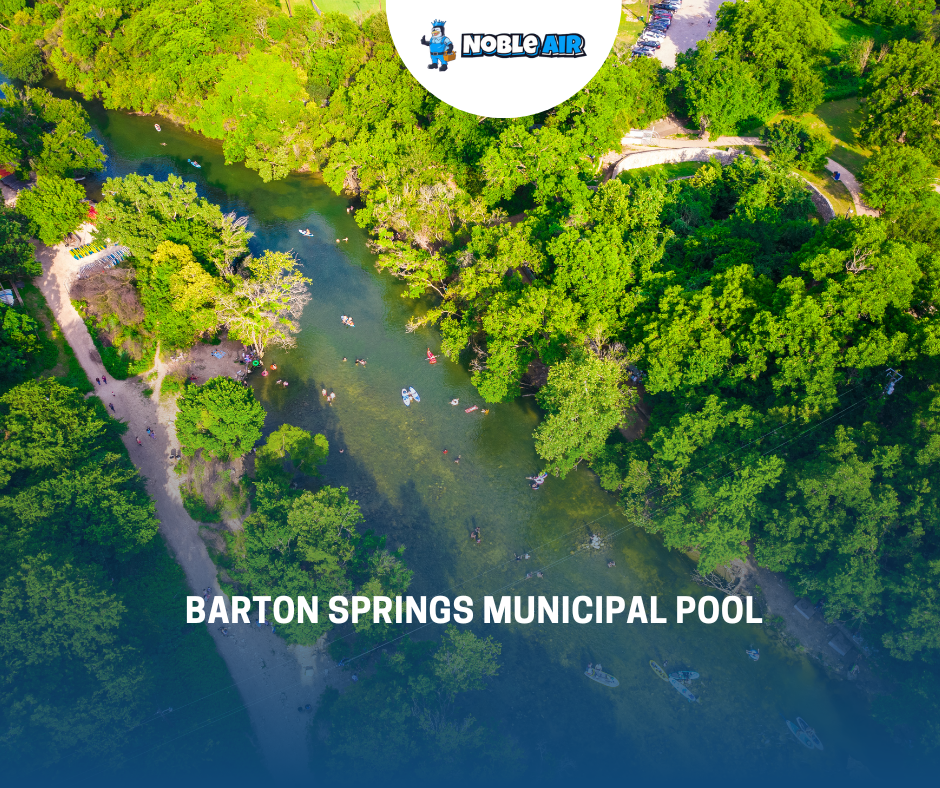In the heart of the vibrant city of Austin, Texas, reminiscent of a mirage in an urban desert, lies the Barton Springs Municipal Pool. This tranquil oasis stands as an emblem of natural beauty and serenity amidst the bustling cityscape.
A testament to the enchanting allure of juxtapositions, this urban swimming spot presents a harmonious blend of nature’s tranquility with human-made convenience. It is not merely a place for recreation; it embodies Austin’s rich cultural heritage and historical legacy.
As we delve into exploring this unique attraction further, there is more than meets the eye about Barton Springs Municipal Pool. This urban gem has fascinating tales etched into every ripple on its surface, reflecting stories spanning decades.
Serving as a focal point for community gatherings since time immemorial, this municipal pool symbolizes collective memory and shared experiences that bind Austin residents together – unveiling their subconscious desire for belongingness.
Rich in both natural splendor and historical significance, Barton Springs Municipal Pool serves as a vivid reminder that places are not just spaces but carriers of narratives that shape communal identities over time.
The Allure of this Unique Austin Attraction
The distinctive allure of Barton Springs Municipal Pool, a unique attraction in Austin, lies not only in its natural beauty and refreshing waters but also in its rich historical significance.
Nestled within Zilker Park, the pool is fed by an underground spring that maintains a steady temperature year-round, creating a cooling oasis amid Texas’ scorching summer heat. The picturesque setting of this man-made swimming area amidst lush greenery and clear blue sky has made it an iconic symbol of the city’s commitment to preserving nature while providing public recreational facilities.
Furthermore, the pool’s historical roots trace back to Native American tribes who considered these springs sacred and used them for purification rituals.
Delving deeper into the history of Barton Springs reveals layers of cultural influence and community engagement. In the 1920s, Andrew Jackson Zilker donated this land to the City of Austin with provisions for educational use. Subsequently, generations have learned about local ecology through field studies at Barton Springs. Additionally, during segregation days when African Americans were barred from most public pools in Austin,tx due to racial discrimination policies, Barton Springs served as one of their few accessible swimming destinations on designated days—reflecting societal inequalities but also showcasing it as a site where communities could gather despite prevailing social barriers.
The narrative surrounding Barton Springs is not just limited to past events; it continues evolving even today as people from diverse backgrounds find solace in its tranquil environment. With initiatives like environmental clean-up drives and preservation efforts undertaken by both authorities and local residents alike, there’s an implicit sense of communal ownership towards preserving this precious resource for future generations—a testament to how spaces like these can foster a sense of belonging among individuals within society.
Therefore, visiting Barton Springs is not merely about enjoying a swim; it’s about immersing oneself into an ongoing narrative steeped in cultural heritage and shared responsibility towards sustainably interacting with our natural surroundings.
Unraveling the Legacy of this Urban Swimming Spot
Diving into the legacy of this urban swimming spot reveals a rich tapestry of cultural significance, environmental stewardship, and community bonding. Since its establishment in 1917, Barton Springs Municipal Pool has been more than just a recreational facility – it has served as a symbol of Austin’s unique identity and lifestyle.
The pool’s history is intertwined with that of the city itself: from its use by indigenous tribes for purifying rituals to becoming an iconic summer destination in modern times.
The site’s historical milestones are numerous, showcasing how this beloved attraction has evolved over time:
– In prehistoric times, evidence indicates that nomadic tribes used the springs as a reliable water source.
– During the Spanish colonial period in Texas (1690-1821), early explorers utilized Barton Springs for irrigation purposes.
– Robert E. Lee, while stationed in Texas during his military career before the Civil War, reportedly bathed at Barton Springs.
– Andrew Jackson Zilker donated land surrounding the springs to Austin in 1917; consequently leading to creation of today’s municipal pool.
– In 1992, citizens voted overwhelmingly to protect Barton Springs from potential harm caused by urban development.
As one explores further into the narrative woven around this cooling oasis amid bustling Austin life, it becomes evident that civic participation played a pivotal role in preserving and enhancing its allure. A testament to community-led initiatives was seen when citizens rallied together not only for protection against harmful urban interventions but also proposing improvements like lifeguard stands and better sanitation facilities.
Thus rather than simply being consumers of this public space, Austinites actively shaped its destiny by voicing their concerns and aspirations about what they wanted their treasured watering hole to be like. This level of active involvement underscores a sense of shared ownership among locals towards Barton Springs Pool which indeed speaks volumes about their subconscious desire for belonging.
An exploration into Barton Springs’ past serves as an illuminating lesson on how people can influence urban landscapes through collective actions rooted in love for local ecology and shared heritage. From humble beginnings as natural springs serving primitive settlers to now standing tall as an embodiment of Austin’s spirit – every chapter adds richness to its story reflecting societal values spanning generations.
This shared legacy creates bonds between residents across different eras fostering community spirit while adding layers upon layers to one’s understanding about why people cherish this urban swimming spot so dearly within their hearts even today.
READ MORE:
Cinematic Enchantment at Alamo Drafthouse Cinema Slaughter Lane: Where Luxury Meets Entertainment


